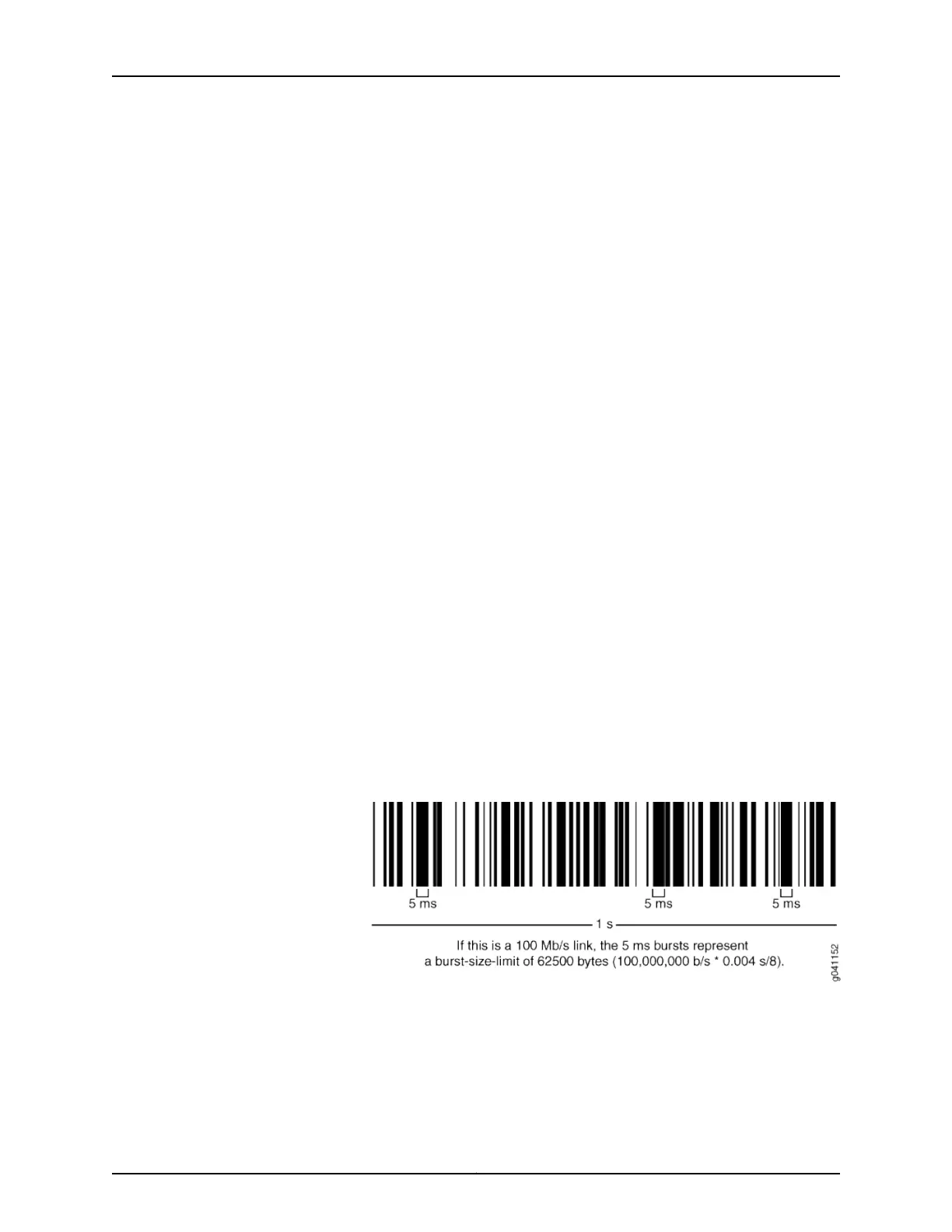Traffic Limits
Junos OS policers use a token bucket algorithm to enforce a limit on an average transmit
or receive rate of traffic at an interface while allowing bursts of traffic up to a maximum
value based on the configured bandwidth limit and configured burst size. The token
bucket algorithm offers more flexibility than a leaky bucket algorithm in that you can
allow a specified traffic burst before starting to discard packets or apply a penalty such
as packet output-queuing priority or packet-drop priority.
In the token-bucket model, the bucket represents the rate-limiting function of the policer.
Tokens are added to the bucket at a fixed rate, but once the specified depth of the bucket
is reached, tokens allocated after cannot be stored and used. Each token represents a
“credit” for some number of bits, and tokens in the bucket are “cashed in” for the ability
to transmit or receive traffic at the interface. When sufficient tokens are present in the
bucket, a traffic flow continues unrestricted. Otherwise, packets might be dropped or
else re-marked with a lower forwarding class, a higher packet loss priority (PLP) level,
or both.
•
The rate at which tokens are added to the bucket represents the highest average
transmit or receive rate in bits per second allowed for a given service level. You specify
this highest average traffic rate as the bandwidth limit of the policer. If the traffic arrival
rate (or fixed bits-per-second) is so high that at some point insufficient tokens are
present in the bucket, then the traffic flow is no longer conforming to the traffic limit.
During periods of relatively low traffic (traffic that arrives at or departs from the interface
at average rates below the token arrival rate), unused tokens accumulate in the bucket.
•
The depth of the bucket in bytes controls the amount of back-to-back bursting allowed.
You specify this factor as the burst-size limit of the policer. This second limit affects
the average transmit or receive rate by limiting the number of bytes permitted in a
transmission burst for a given interval of time. Bursts exceeding the current burst-size
limit are dropped until there are sufficient tokens available to permit the burst to
proceed.
Figure 57: Network Traffic and Burst Rates
As shown in the figure above, a UPC bar code is a good facsimile of what traffic looks
like on the line; an interface is either transmitting (bursting at full rate) or it is not. The
black lines represent periods of data transmission and the white space represents
periods of silence when the token bucket can replenish.
909Copyright © 2017, Juniper Networks, Inc.
Chapter 27: Configuring Class of Service

